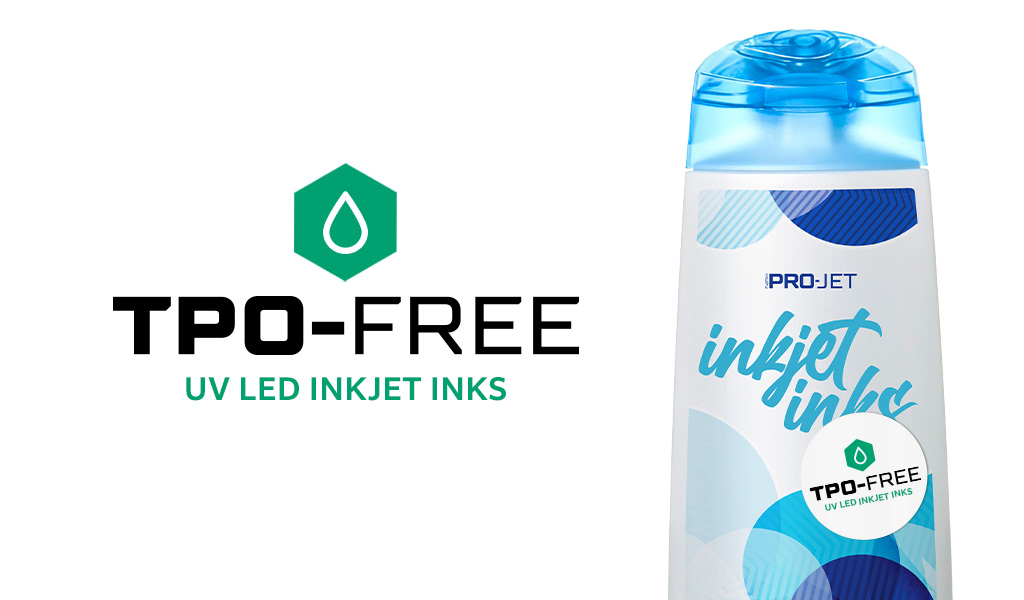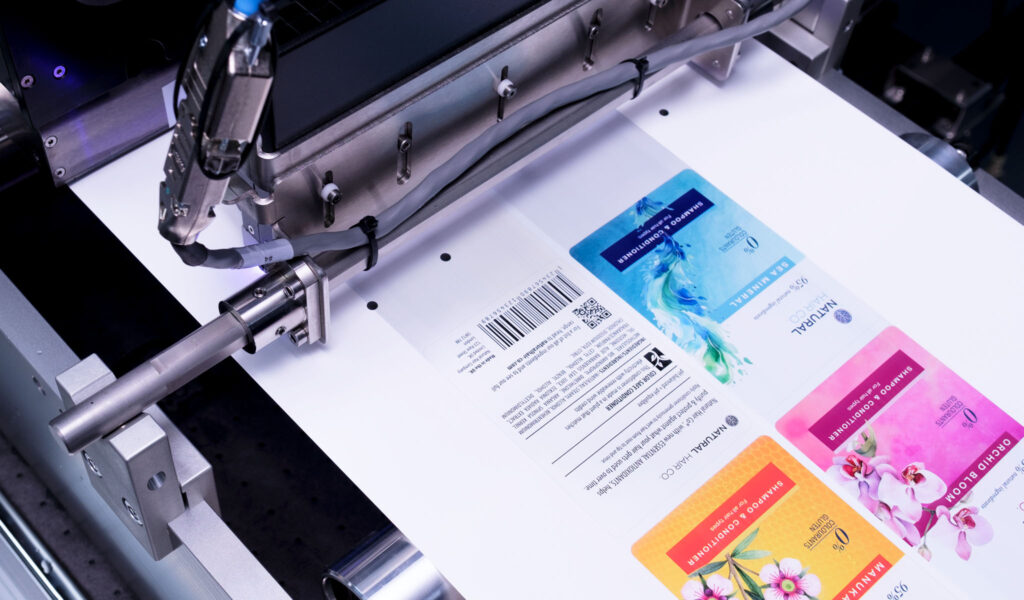In digital label printing, Mercury UV and UV LED inkjet have become mainstream technologies, with inks that deliver fast-curing for single-pass printing and durability. However, in Europe, the industry is facing a regulatory change that will drive a shift towards ink formulations that are formulated without TPO photoinitiator, which is a well-established and important curing component of high-performance UV inks.
This article aims to inform print system OEMs and print providers about the impending changes, the implications for label printing, and how Fujifilm’s innovative TPO-Free ink technology can support the transition.

Changes in Legislation
TPO, a common photoinitiator widely used in UV-curing inks, is undergoing re-classification in Europe. The new legislation, set by the European Chemicals Agency, involves reclassifying TPO as more toxic to reproduction than previously believed, requiring the new hazard phrase “H360FD: May damage fertility. May damage the unborn child.” It is expected to be officially ratified by the end of 2023.
Inclusion on the EU REACH SVHC List
TPO has already been listed as a Substance of Very High Concern (SVHC) by European REACH regulation (Registration, Evaluation, Authorization, and Restriction of Chemicals), which evaluates and restricts chemicals’ impact on human health and the environment. As a result, mixtures or products containing TPO at equal to or greater than 0.1% will have to be declared accordingly in the Safety Data Sheets (SDS).
EuPIA Exclusion List
Once TPO is reclassified (to H360FD) it will be added to the EuPIA Exclusion List. The European Printing Ink Manufacturers’ Association (EuPIA) plays a vital role in ensuring health and safety standards in the ink and printing industries. Their Exclusion List for printing inks and related products prioritizes hazard classification and toxicological evidence to safeguard the well-being of printing ink industry workers, customers, and users of printed materials. It lists materials that should not be included in the formulation of inks and manufacturers and suppliers commit to this Exclusion Policy on a voluntary basis. Members who subscribe to the list will not be able to supply products that contain TPO.
Implications for Digital Label Printing
The re-classification of TPO has significant implications for the label printing industry, where UV ink technologies are used widely in flexographic and inkjet printing processes. Print system OEMs and print houses that use TPO-containing formulations must anticipate and adapt to these regulatory changes.
If companies choose to use TPO-containing inks, the product safety label will require inclusion of the hazard phrase and declaration of TPO as an SVHC in safety-data sheets. Considering increasing demand for safer and environmentally friendly products, printers will be cautious about using substances that are labelled as such in their print for packaging applications.
Embracing TPO-Free ink technology becomes a proactive approach for OEMs to meet market demands for safer label printing. This shift ensures compliance with regulations and promotes a safer and greener label printing process.

Fujifilm TPO-Free Ink Technology
Amid the evolving regulatory landscape, Fujifilm is at the forefront of innovation with its TPO-Free inkjet ink technology. Recognizing the need for compliant solutions, Fujifilm has engineered high-performance TPO-Free inks for inkjet label printing designed to deliver image quality, color vibrancy, chemical resistance, and light-fastness on common label media whilst maintaining key cure-related properties such as adhesion and resistance – all vital attributes for successful label applications. Fujifilm’s TPO-Free inks are UV LED curing for advanced, high-speed single-pass printing systems printing at speeds in excess of 100 m/min.
Fully Validated for Performance in Label Applications
Fujifilm’s ink development process includes comprehensive testing, qualification, and validation to ensure that the TPO-Free ink technology meets the precise requirements of inkjet label printing. TPO-Free ink formulations are extensively tested to deliver the same high performance as traditional TPO-containing inks while complying with the new regulations. Fujifilm works with printheads from all major manufacturers.
Transitioning to TPO-Free Ink Solutions for UV Label Printing
As the label printing industry navigates impending regulatory changes, embracing TPO-Free ink technology becomes an essential step for OEMs. Fujifilm’s advanced TPO-Free UV LED inks offer an innovative and compliant solution to create advanced high-performance label printing systems. By partnering with Fujifilm, OEMs can prepare for the regulatory shift and transition to TPO-Free ink solutions.
Contact Fujifilm to discuss TPO-Free inks for your label printing system development.